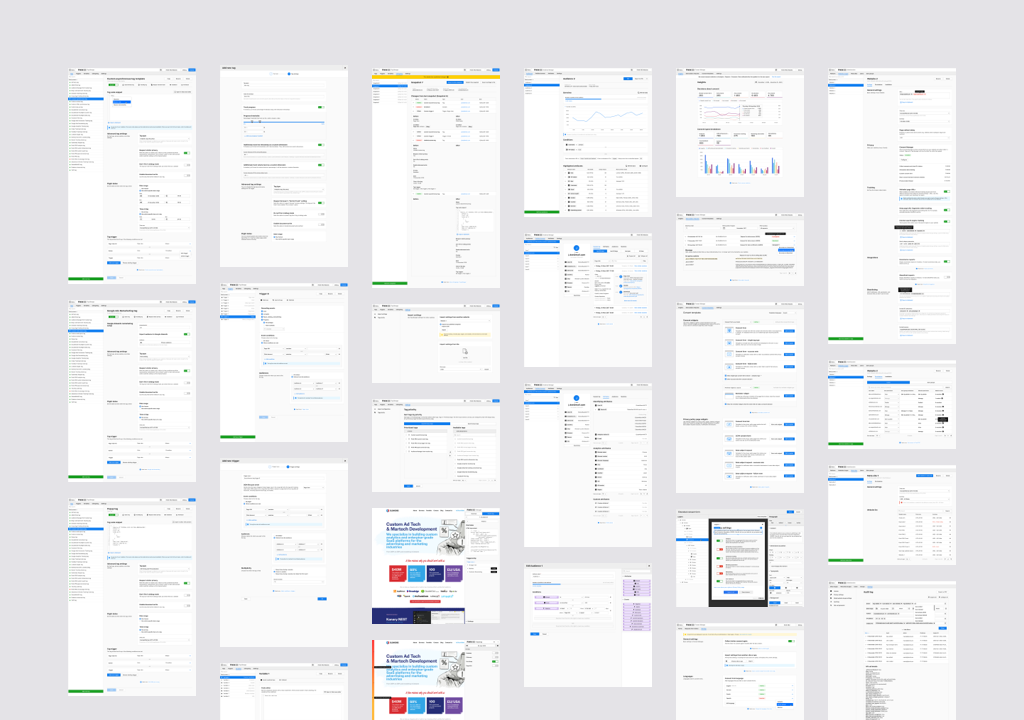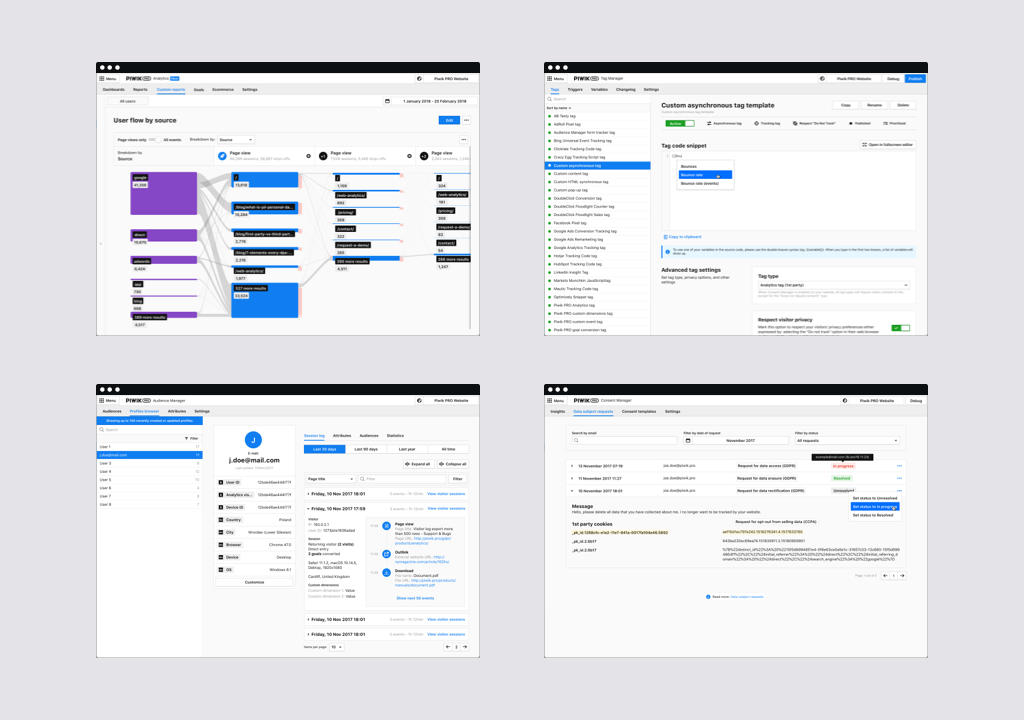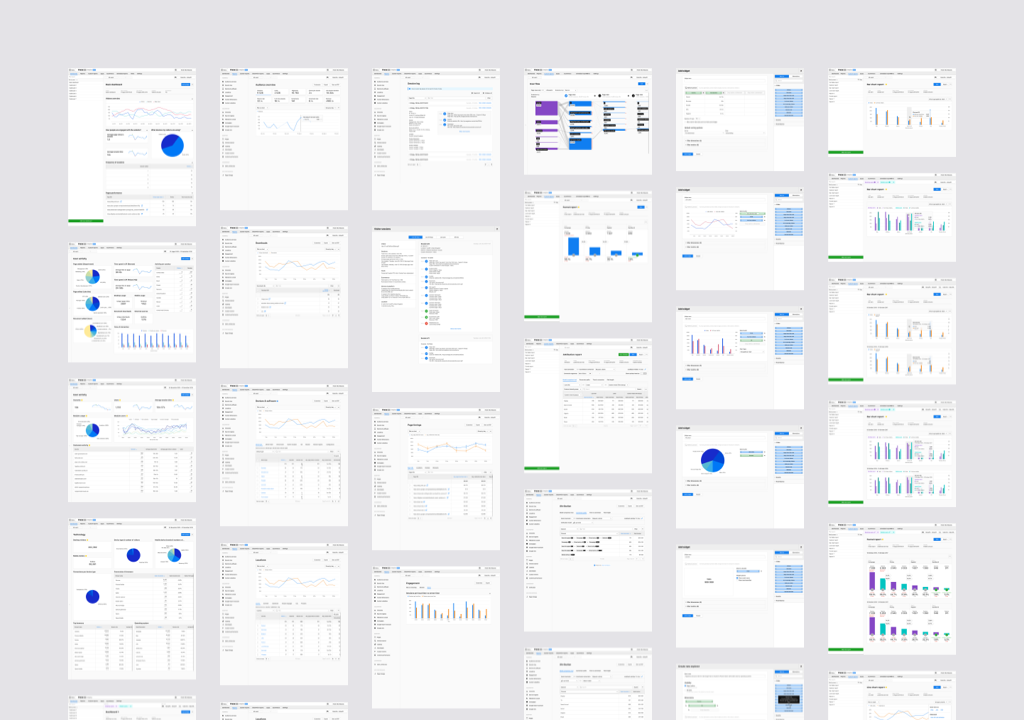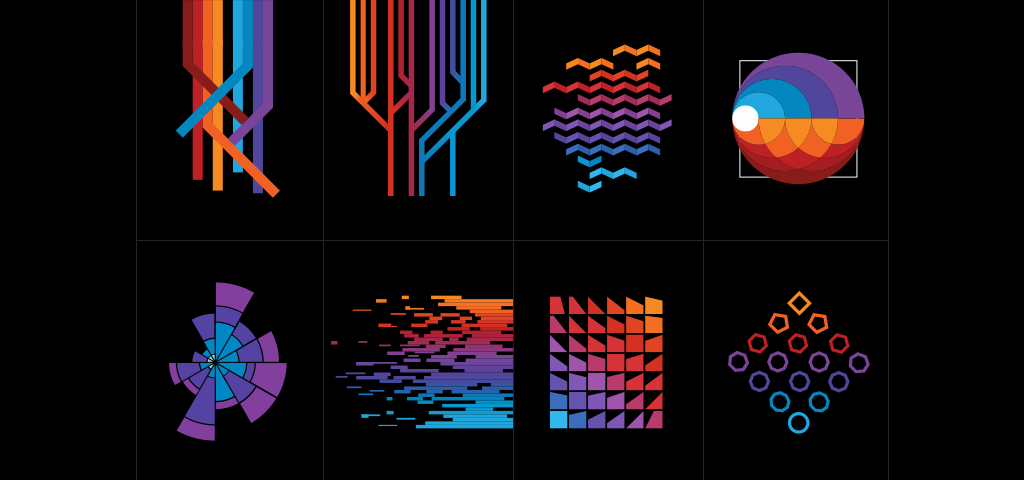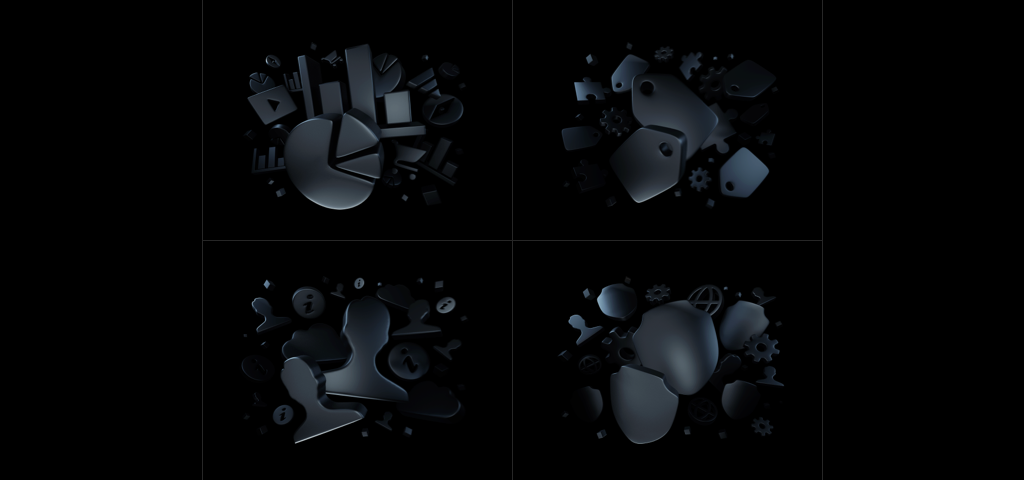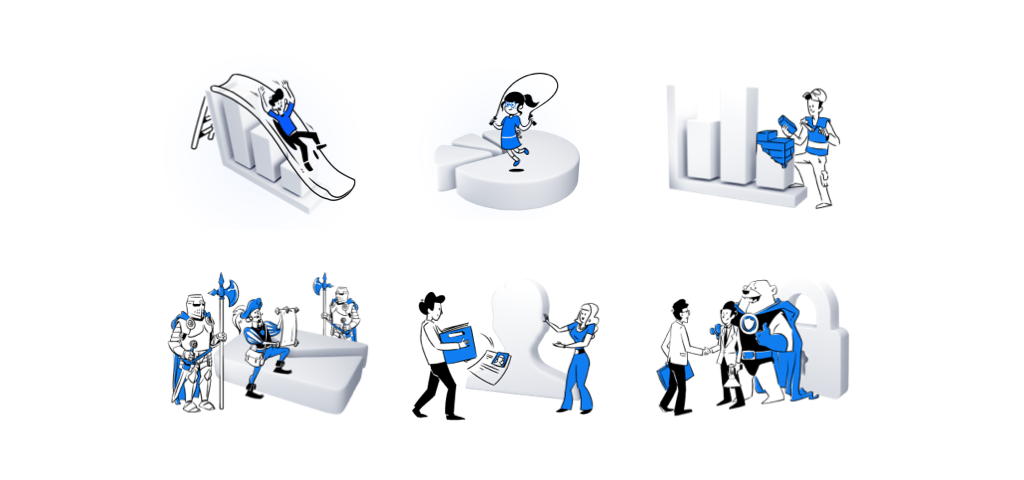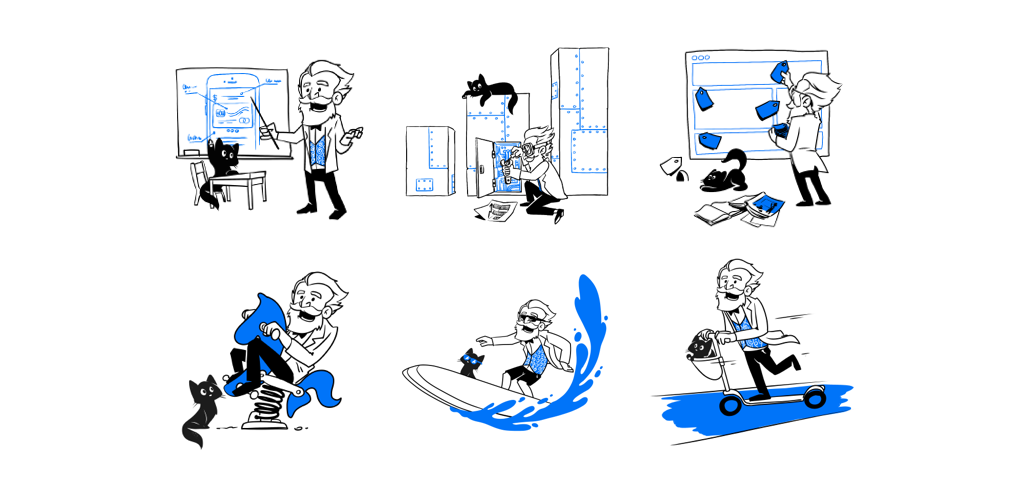Piwik PRO
Piwik PRO is the company behind Piwik PRO Analytics Suite—an analytics platform with a focus on user privacy and data security.
Piwik PRO’s story started in September 2013 with consulting services offered for the open-source version of the software—Piwik. Three years later the paths of the open-source project and the enterprise side parted. Since then the company has raised $2 million in a Series A Funding Round and has been developing a new proprietary platform that puts user privacy first.
- Here's an article about it by Techcrunch.
In 2019 the company’s strategy shifted to becoming a viable alternative to Google Analytics, and the brand underwent a refresh. In 2021 revenue reached $6.3M and in 2022 it surpassed $10M.
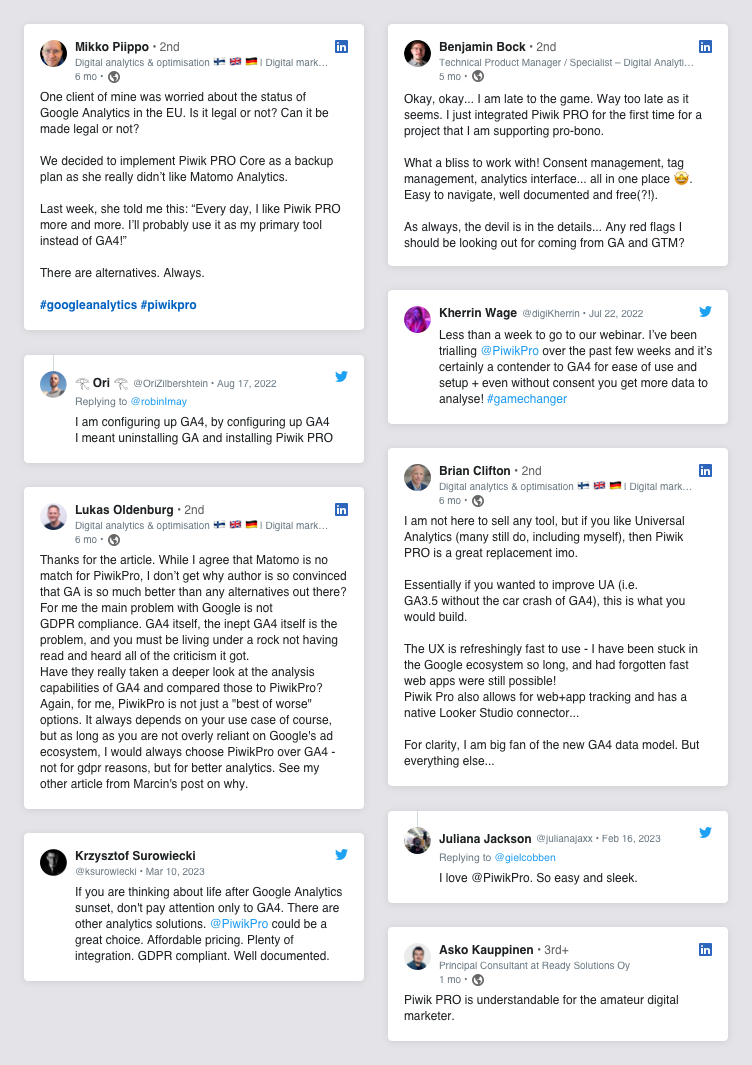
Piwik PRO is used by companies that need to meet high privacy and security standards, from a range of industries like finance, government, banking, insurance, and healthcare.
During my work in Piwik PRO, I’ve led both brand design and product design efforts and managed four designers in total—two for each specialization. I’ve overlooked all brand transitions, and all product pivots, including the final one—to Piwik PRO Analytics Suite.
Working with Rafał over the past few years has been an absolute pleasure. He is an exceptional designer who brings a wealth of knowledge and experience to the table. His contributions to the design of our product have been instrumental in creating a worthy Google competitor. He has also played a key role in creating our brand identity.
- Hubspot team wrote about it!
- Read more on Nathan Latka's blog.

Product design
After separating from the open-source project, we’ve been looking for the right direction for the product to grow into. We reworked the existing analytics module, developed several additional ones, and after some experimentation we’ve settled and focused on four:
- Analytics – the heart of the platform, for visualizing the user traffic data.
- Tag Manager – responsible for managing different code snippets running on your website, including those for collecting analytics data.
- Customer Data Platform – for collecting and enriching user data from additional sources.
- Consent Manager – for gathering and managing consent information from users.
One of the biggest challenges while building the platform was redesigning and rebuilding the analytics module. The old software was using an unreliable database, that didn’t scale well, and the UI looked dated. We’ve selected a more performant database and started rebuilding the module feature after feature. We started with Custom reports, a functionality that could be perceived as a standalone module. After that, we created dashboards and recreated standard reports available in the original open-source application, so the migrating companies would feel at home. We’ve made the module available as a beta version, and we continued adding missing functions. Once we were sure that we’ve covered enough functionality, we stopped offering the old module to the new clients and prepared a development plan that would result in turning it off for the old ones.
As the company wanted to position itself as a direct Google Analytics competitor, it gave us the opportunity to rethink and redesign features that our competitor’s users were complaining about. As a result, many of them are much more usable in comparison.
Types of reports in Piwik PRO Analytics
In the end we successfully created a counterpart to each Google Analytics report and visualization. Dashboards for quick, glanceable information. Explorer reports for diving deep into user attributes. User flow and funnel reports for analyzing user behavior. And finally, attribution reports, showing you the paths customers take to complete conversions.
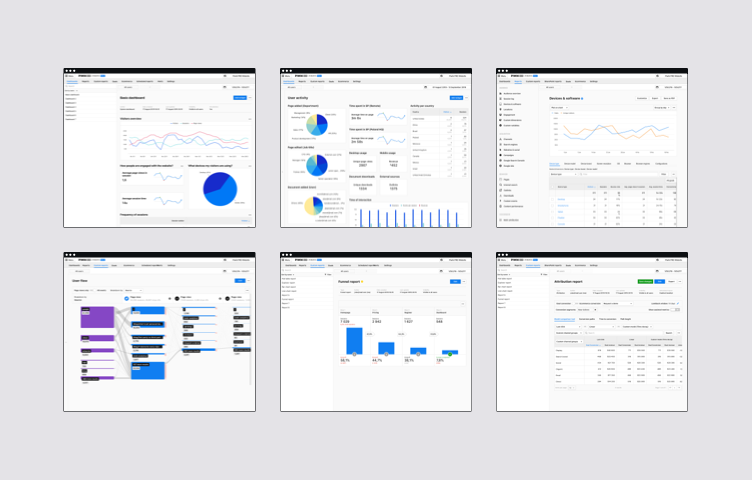
View full size image
Report creator
Piwik PRO Analytics report creator was one of the examples of stark improvement over the Google Analytics solution. We’ve created a visual and intuitive way of creating your reports that revolved around dragging and dropping different metrics and data dimensions to appropriate slots presented to the user. Users got a preview of what they were creating, and they were sure of the outcome before they saved the report.
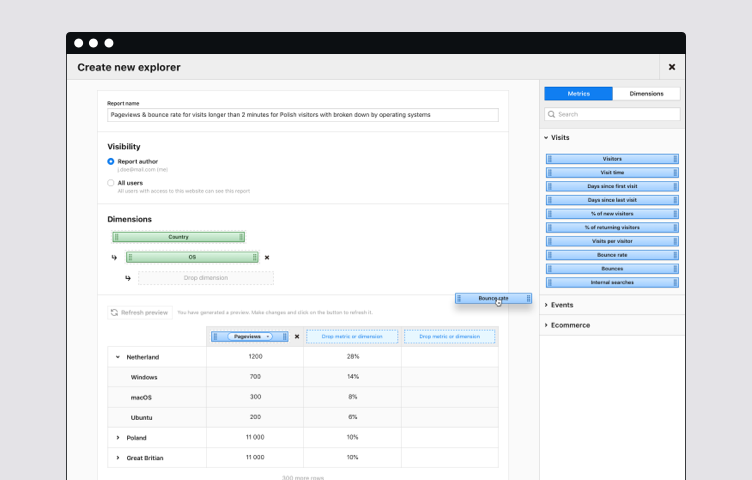
View full size image
Information architecture of reports comparison
The most difficult challenge was creating an intuitive visualization framework for comparing two different traffic data dimensions—date and user segment. I proposed a simple rule, where we duplicated a chart whenever a user wanted to compare by date, and we changed the color palette and decreased the number of displayed metrics whenever user segments were compared. With those simple rules, you could enable comparisons on any chart type across the system, custom reports and dashboards.
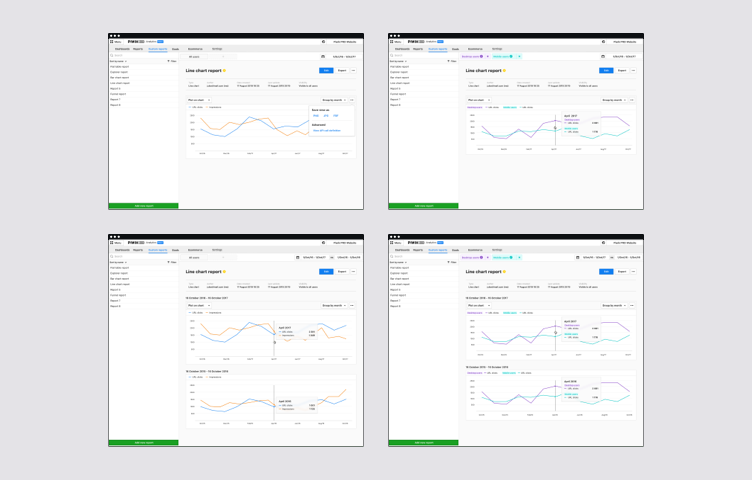
View full size image
In total over 1000 different screens were created in Sketch to help visualize ideas and document solutions for development needs.
Design system
During the development process, I coordinated the work of three teams of front-end developers. Thanks to the process we’ve established, we were able to create a library of UI components used consistently among all four Piwik PRO Analytics Suite modules.
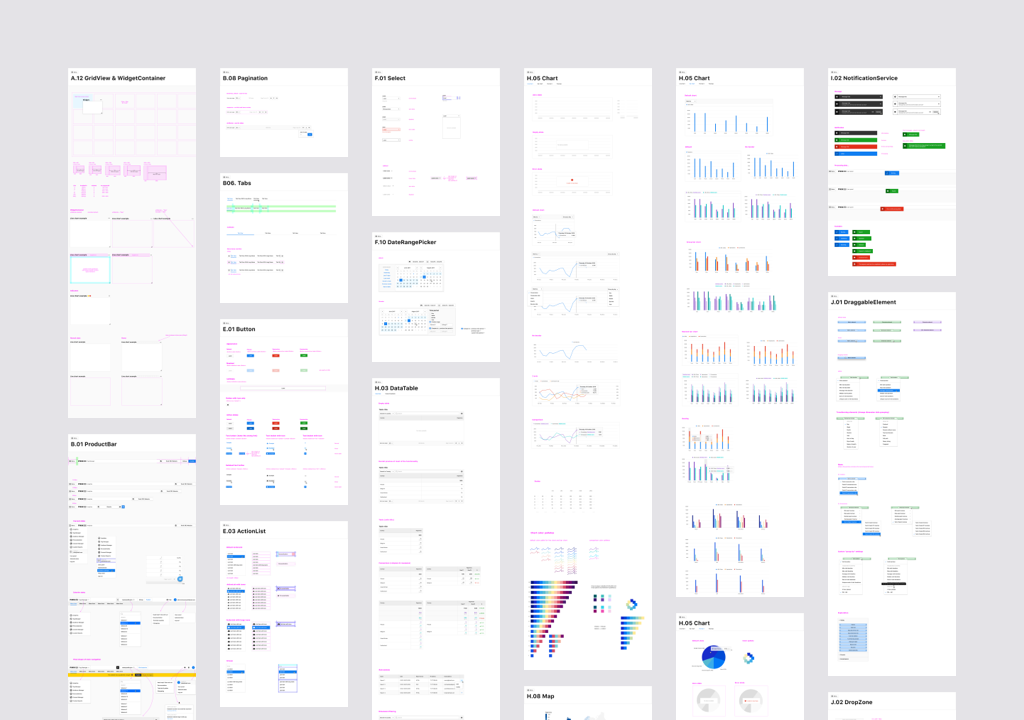
View full size image
Brand design
The final strategy pivot was due to the company refocusing from building the marketing tool to an analytics platform. To figure out the direction, I’ve conducted workshops with all managers. We’ve used Google’s three-hour brand sprint.
- Great summary by Jake Knapp — the creator of three-hour brand sprint.

It allowed us to decide on the future strategy, what the main audience of our message is, how we want to position ourselves among our competitors, and how to support all of it with our visual language.
Brand sprint
Final slides with the results from Piwik PRO's workshop
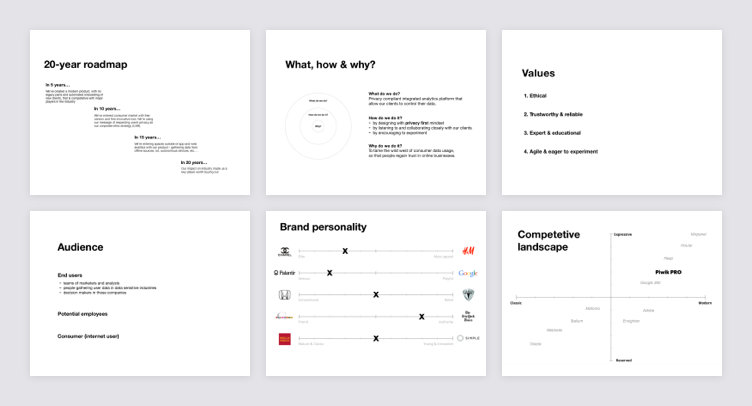
The user-facing departments wanted to see something friendly, and the client-facing departments argued for a direction that would be serious and conservative. In the end, we’ve come up with an illustration system that satisfied both sides.
- In a B2B environment, the decision makers often aren’t the ones using the product.
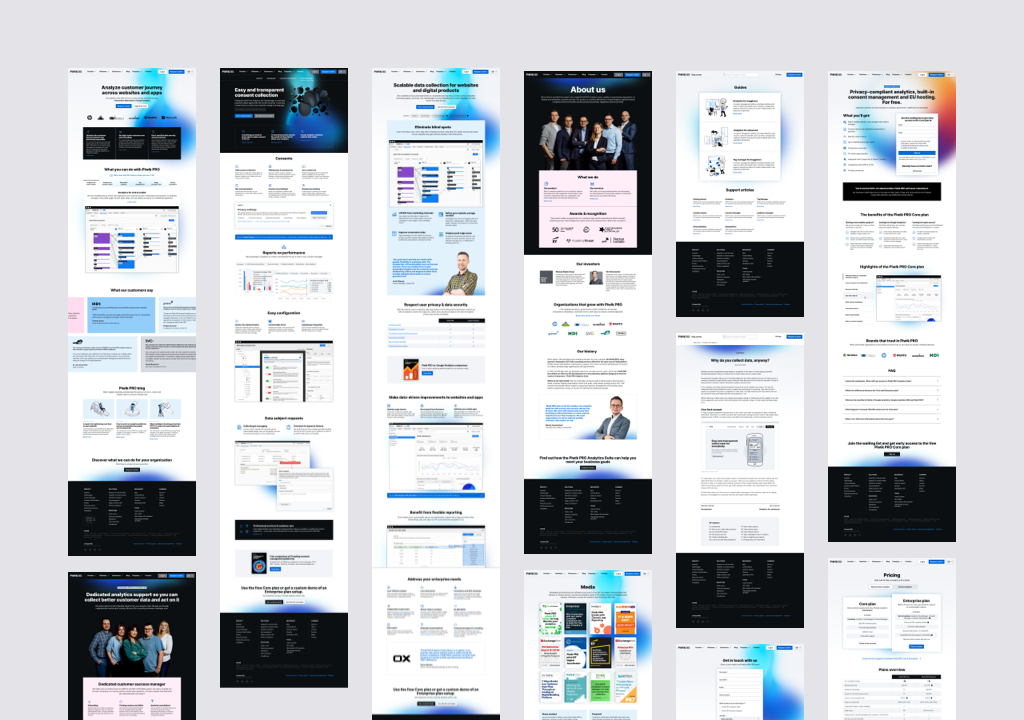
View full size image
We used 3d illustrations when we were talking about our product, and we used hand-drawn illustrations for the content directed toward our users (guides and documentation). We used a mix of those for anything in between (e.g., in blog articles about industry topics that mentioned our product).
For the help center materials, we’ve created a mascot that guided users through the content. A character of an old professor and his furry companion—a cat that played the part of the audience in the illustrations. For whitepapers and webinars, we used an abstract visual style. Finally, we created a custom set of icons to have the ability to add a small visual element even to the smallest portions of the content.
In the end, we landed on a visual language with a lot of elements and an eclectic style, but also one that leveraged our skills and helped us learn new things.
T-shirt motifs
Branding assets used as a graphical theme for the company t-shirts and blouses.
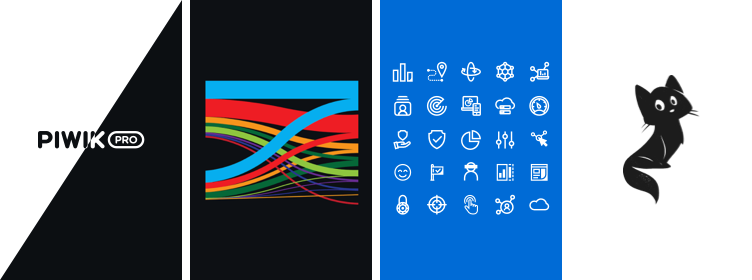
Employer branding
A part of the company’s strategy was to present our employees as specialists. Anybody that was interested in supporting the company's privacy and security message received a set of professional assets they could use in promotion. We’ve created two stylistics for photographs—for both individual and group photos. In order to facilitate taking a large number of photos, we’ve built a small studio. Thanks to that, we could take photos of our employees quickly and in more comfortable setting.
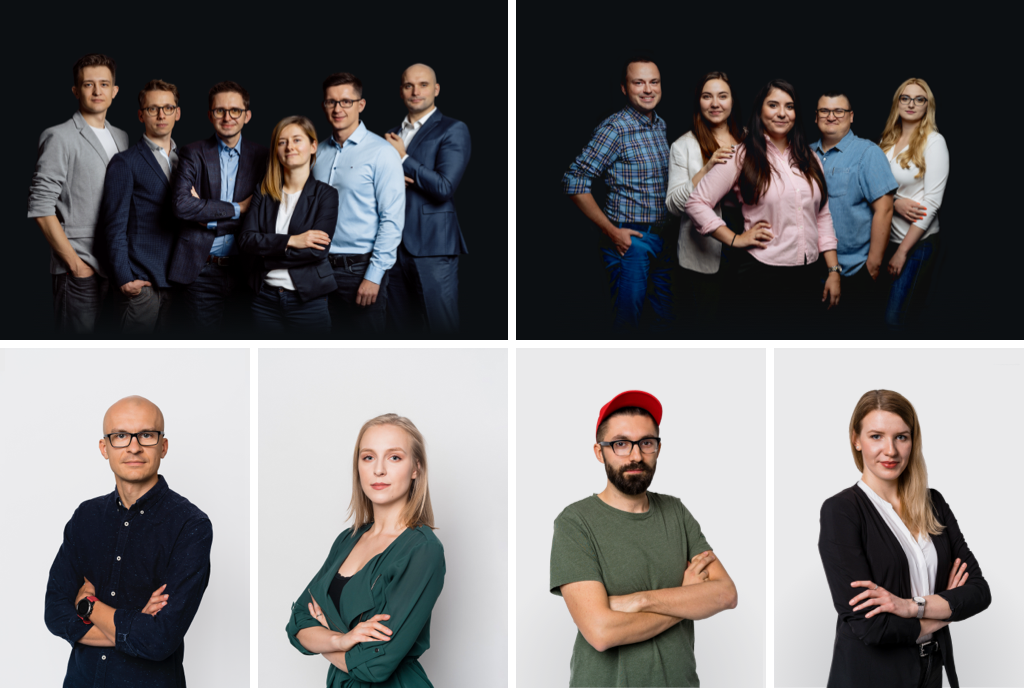
Another employer branding project revolved around showcasing the atmosphere and uniqueness of each Piwik PRO team. We conducted workshops with each team and created a custom pinboard that was meant to represent their unique traits.
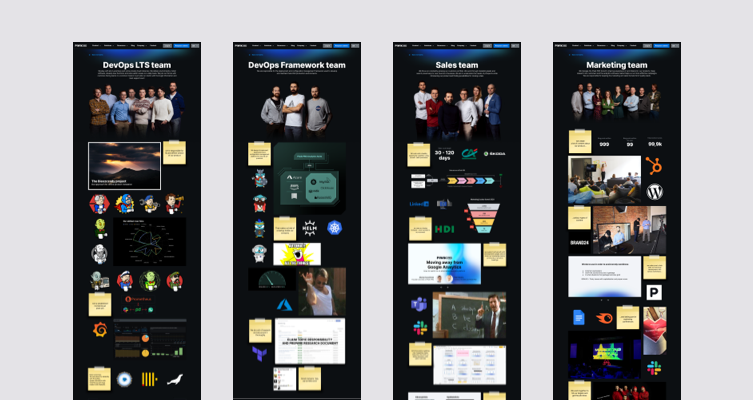
It allowed them to share their priorities and inside jokes with potential new candidates, as well as present how each team worked—its processes and methodologies. It also showcased the company's employer brand values.
